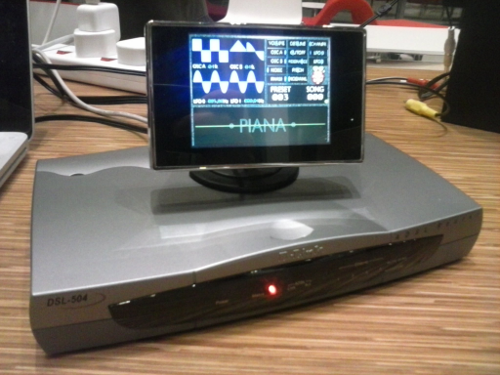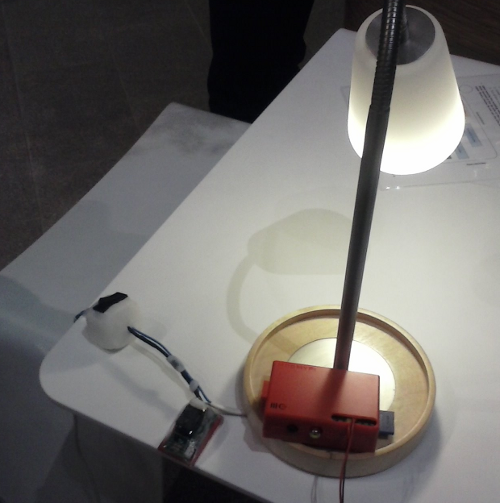Last night around 50 people gathered in a science park to watch a man switch on a lamp.
Fortunately this was very much a case of the process being more important than the outcome. This wasn’t a group of yokels getting their first exposure to electricity, but rather Bristol’s latest “Raspberry Jam” event, a showcase for owners of the Raspberry Pi computer to show off their products.
As we’ve previously covered, the Pi is a computer that fits on a circuit board a little bigger than a credit card. It costs from as little as $25 and although you’ll need to add peripherals to its various outputs to do much with it, it is a fully working PC. Both its low cost and small size are designed to inspire creative thinking about ways to use the technology. Events like the Jam are designed to answer the question many new Pi owners have: what exactly can I do with it?
First to speak at the Jam event was Chris Wallace, who explained how he is trying to use the Pi on his boat. He says that although boats often use a wide variety of electronic data systems, they aren’t always practical to consult. Storing them below deck means constantly having to run back and forth to check them, which can disturb people sleeping below (assuming the bleeps and flashes of the equipment hasn’t already woken them. However, it can be difficult to see screens on deck during wet and windy conditions, not to mention the water can play havoc with them.
Chris is thus working on adapting the Pi to take this data and relay it through the eSpeak tool in Unix so that the crew can get the data in audio form. He noted that this idea could be further adapted to use in kayaking where checking a screen is completely out of the question. He’s also looking at a way to incorporate the data broadcast over VHF radio to avoid collisions.
The next speaker, Arthur Amarra, was making his return to the Jam, having previously covered his attempts to use the Pi to control a robotic arm (a project inspired by his own limb being in a sling.) This time he demonstrated his attempts to use the Pi to modify a lamp to be voice controlled. It’s a clear example of something that has little practical purpose in this form, but does help expose some of the problems and workarounds when working with machines like the Pi.
Arthur explained that the system works much better since the last Pi firmware update, which improves the audio input options via USB: for the demo he used a Playstation Eye as a microphone. In future he plans to try using a Bluetooth microphone simply to free up another USB port. While the system does currently switch on the lamp (admittedly after a few attempts), the speech recognition isn’t yet refined enough to cope with the difference between “lamp on” and “lamp off”, so voice control doesn’t yet switch off the lamp. Perhaps the most impressive and/or terrifying part of the engineering involved is the plastic casing Arthur used to integrate the Pi connection into the lamp’s power supply without exposing users to the 240 volts that come from European mains sockets.
Finally Phil Atkin showed his progress in creating an electronic synthesizer using the Pi (pictured on top.) The project, which originally began on a PC with a dual core A9 processor had to be redesigned more efficiently to work on the Pi. Phil says a particular problem is that ALSA, the main sound facility on the Pi, can easily take up to 50% of its processing power.
According to Phil, the project’s main difficulties have been in the software programming rather than the hardware. The sheer potential complexity of the various effects and filters in the synthesizer meant that in the original design it would have taken “10 times as long as the universe has existed” to demonstrate each potential combination for three seconds. That’s now been cut to around two days.
The hardware involved costs a total of £17.59 (around US$30) and includes a 3.5 inch monitor, a router box, a tin that used to hold mints and a piece of plywood. Phil’s long-term plan is to produce a commercial synthesizer kit for Pi users and he’s in contact with Martyn Ware, formerly of the Human League and Heaven 17, both known for their synth-based music in the 1980s.
http://www.youtube.com/watch?v=a8amKRXBYX8



